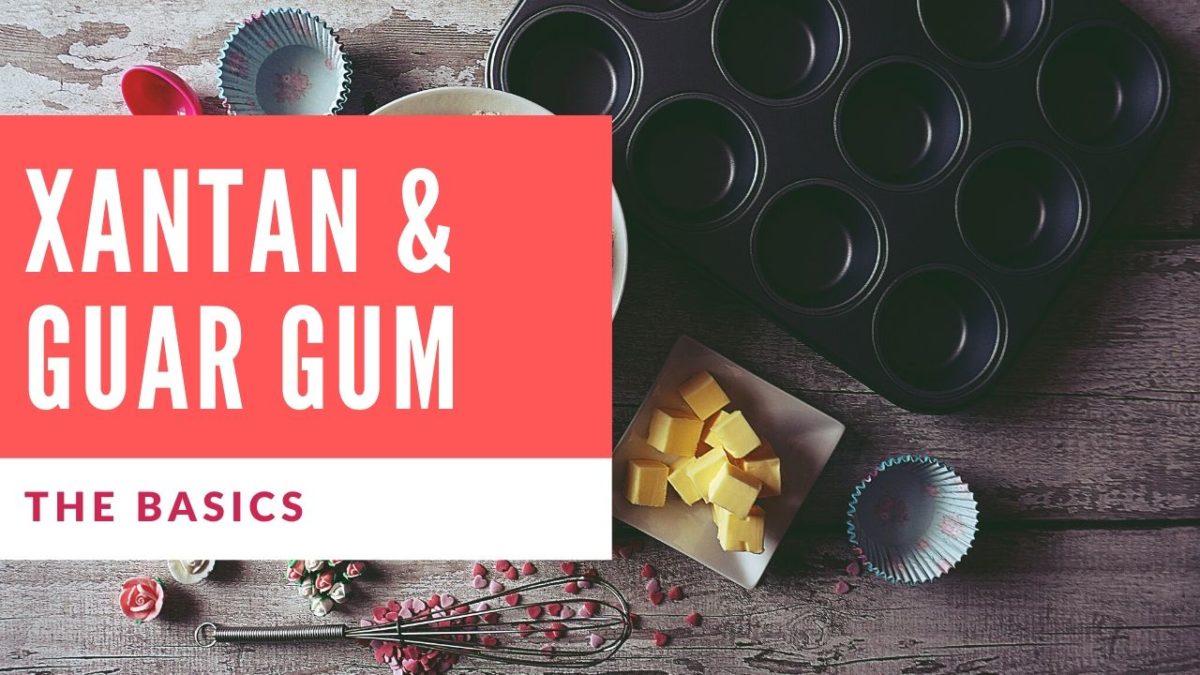When my daughter was diagnosed with celiac disease, I became good at reading labels. I also learned which ingredients with strange names are gluten free – like guar gum and xanthan gum.
For a long time, I simply accepted that these were gluten “replacements” but as I bake and cook more gluten free recipes, I wanted more answers. What are these ingredients and where do they come from?
Xanthan (ZAN thun) gum and guar (gwar) gum are used to bind, thicken and emulsify in gluten free cooking. Using the proper amount of one of these gums can help prevent gluten free baked goods from deflating after rising or being too crumbly.
Xanthan Gum
Xanthan gum is a corn-based, fermented polysaccharide. It’s made by fermenting corn sugar with a microbial called “Xanthomonas campestris.” Xanthomonas campestris is the same bacteria responsible for causing rot to form on leafy vegetables, such as broccoli, lettuce and cauliflower. The bacteria form a slimy substance which acts as a natural stabilizer or thickener. The sugars in Xanthan Gum are present in corn sugar, a derivative of the more familiar corn syrup.
Xanthan gum is commonly used in the food and cosmetic industries to thicken and stabilize. It is used widely in commercial baked products and prepared foods, both gluten free and gluten laden versions. Xanthan gum is also used in dairy products and salad dressings. It prevents ice crystals from forming in ice creams and helps with the consistency and texture in low or no-fat dairy products. It also helps keep water in fillings to keep pie and pastry crusts crisp. A small amount of Xanthan gum in cream-based cosmetic products keeps the ingredients from separating. It can also add a gel like quality to otherwise “liquid” ingredients. A lesser known use of both xanthan and guar gums is in the oil industry. The gums are added to water to keep well parts lubricated and used as part of many fracking solutions.
Xanthan gum can really make a difference in gluten free cooking, particularly baking. It helps gluten free dough rise and hold after baking, so you don’t end up with flat muffins or sunken bread loaves or cakes. However, if you use too much xanthan gum in a recipe the result can be a heavy, gummy or even slimy texture. So until you are comfortable with using it, measure carefully and follow “tested” recipes.
Guar Gum
Guar gum, also called guaran, comes from the seed of bean-like (legume) Guar plant. The Guar plant sometimes is referred to as the Indian tree. The guar seeds are dehusked, milled and screened to obtain the guar gum. It is typically produced as an off-white, coarse to fine ground powder. It is high in soluble fiber and generally has more thickening ability than cornstarch. Since it can be produced at cheaply it has made guar gum a popular additive in a number on industries besides food including textiles (finishing, printing, tablet binding), paper (improved sheet formation, density for folding and printing), explosives, pharmaceuticals (binder, disintegrator, laxative), cosmetics (thickener, emollient) and mining.
While folks new to baking or the gluten free diet may see guar gum and xanthan gum as strange new additives, these gums as well as other thickners like carageenan and locust bean gum are what make many store bought ice creams, puddings and sauces edible because they keep the ingredient together, allow the products to maintain mouth pleasing consistencies and help prevent the formation of ice crystals.
Like Xanthan gum, measure carefully when using guar gum in gluten free recipes or you may end up with heavy, stringy baked goods.
General Tips for Using Xanthan Gum and Guar Gum in Gluten Free Cooking
Both gums can be bought at most grocery stores and in bulk at the majority of health food stores or online. As a little goes a long way, you won’t need much to do plenty of GF baking!
Both gums should be stored in an airtight container in a cool dry place. Some bakers recommend storing in the fridge but this is probably not necessary in most climates.
- Bread and pizza dough recipes: Add 1 teaspoon xanthan gum or guar gum per cup of gluten free flour used in bread and pizza dough recipes
- Cake, muffin and quick bread recipes: Add 1/2 teaspoon xanthan gum or guar gum per one cup of gluten free flour used
- Cookie and bar recipes: Add 1/2 teaspoon (or less) xanthan gum or guar gum per one cup gluten free flour used
I have found that I usually will use the recommended amount the first time I make a recipe but often reduce the amount in subsequent recipes and/or with different gluten free flour mixes as I become more familiar with how each flour mix bakes. I often use less (between ¼ and ½) of what a recipes calls for and the product still turns out nicely. This takes some experimentation though.
Remember to always check your flour mix or even “single” gluten free flour to make sure neither gum or other binders, such as corn starch, tapioca starch/flour, potato starch, arrowroot, baking soda or baking powder, have already been added.
A Word of Caution
There are people who are allergic and/or sensitive to both xanthan gum and guar gum. People with allergies or sensitivity to corn may want to discuss with their physician whether they need to avoid xanthan gum. I have also heard/read that xanthan gum can be made from wheat or soy, but have not been able to verify that or if there is detectable gluten in any xanthan gum. Inhaling xanthan gum “dust”, or getting it in your eyes, can cause irritation. Guar gum has been associated with gastrointestinal upset in some people. Additionally, guar gum was used as an ingredient in non-prescription diet aids until it was banned for such uses in the early 1990s by the FDA. The guar gum would bind with liquids in the stomach and swell, causing a feeling of fullness. However, this swollen mass would also cause dangerous intestinal blockage. Guar gum has been declared safe in small amounts as a food thickener and binder.
So if you have a reaction to something that contains no other suspicious ingredient, it is possible it could be the one of these gums. If I learn more about these allergies/sensitives, we will provide an update. Some non gum or starch alternatives that work in some recipes are applesauce, chia or flax seeds. A good article entitled “Could Xanthan Gum Sensitivity be Compliacating your Celiac Disease Recovery” can be Celiac.com
Sources used and with additional information:
- http://glutenfreecooking.about.com/od/glutenfreecookingbasics/a/xanthanguargums.htm
- http://www.wisegeek.com/what-is-xanthan-gum.htm
- http://en.wikipedia.org/wiki/Xanthan_gum
- http://www.wisegeek.com/what-is-guar-gum.htm
- http://en.wikipedia.org/wiki/Guar_gum
- http://www.islandfoodie.com/guar%20gum.htm



One reply on “The Basics of Guar Gum & Xanthan Gum”
Google Blog Search This entry was posted in Gluten-free Cooking and tagged Blog, comment, Glutenfree, Happy. […]